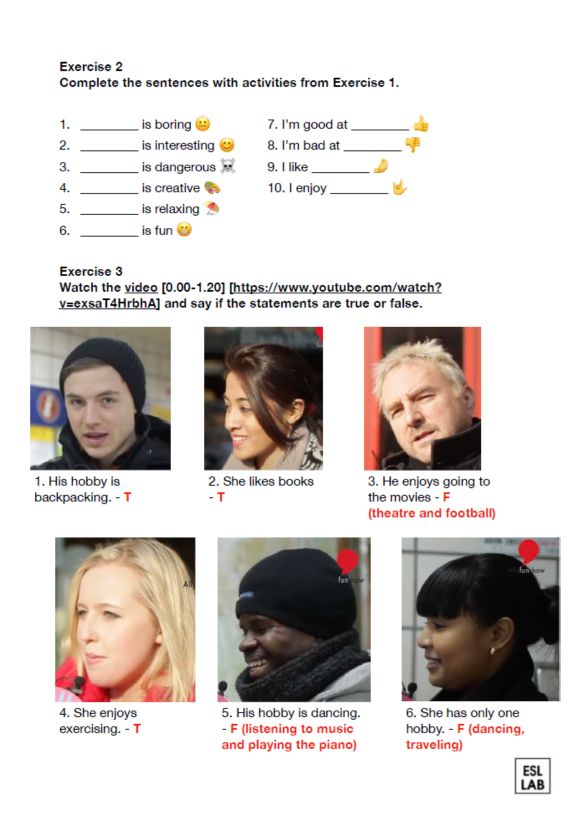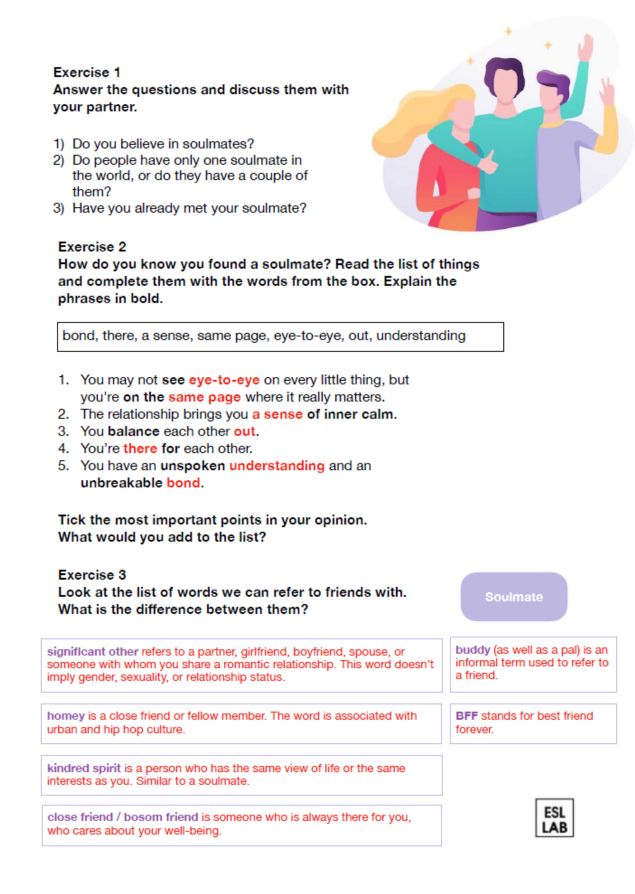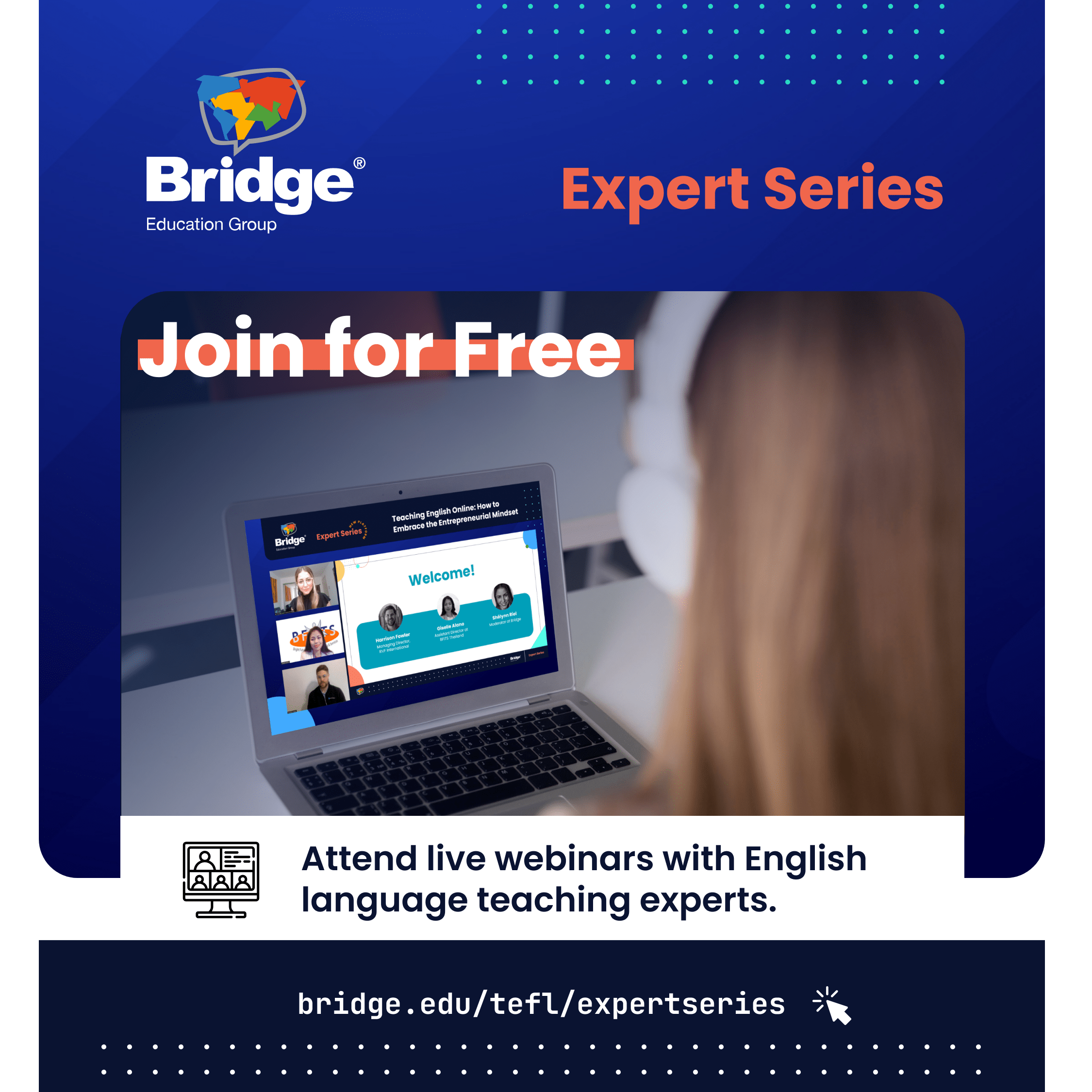This is a guest article by esl.laboratory, which provides high-quality lessons and learning materials created by experienced ESL teachers. Covering a wide range of thought-provoking topics, their lessons are designed for middle school through adult learners and for language levels A1-C1.
As an ESL teacher, you’ve probably spent hours scouring the internet for that perfect worksheet or conversation activity, only to be met with a sea of resources that just… don’t cut it. You know, those dull, cookie-cutter materials that leave your students looking like they’ve just been hit with a wave of boredom? But what if there’s a way to inject some life into your lessons while improving students’ language skills in real-world scenarios?
Enter authentic materials – content made for native speakers in everyday life: YouTube videos, menus, podcasts, news articles, etc. These gems can turn your ESL lessons into practical, engaging, and highly effective learning experiences.
Why bother with authentic materials?
While textbooks are great for building foundational grammar and vocabulary, they often miss the mark on what students truly need to know: how to function in the real world. That’s where authentic materials step in, offering language that’s alive and kicking.
Here’s why they work:
1. Exposure to real language
Let’s be honest. Reading about John and Mary going to the store is about as thrilling as watching paint dry. While textbooks are fine for learning the basics, they rarely reflect how we actually use language in real life.
Authentic materials, on the other hand, offer the raw, uncut version of English. They present language in its natural form, with slang, idioms, and, yes, even those weird abbreviations that pop up in text messages (looking at you, “LOL” and “BRB”). This helps learners get used to how language is actually spoken and written, rather than the sterilized version they get from most ESL textbooks.
Want to show your students how people talk? Play a clip from a cooking show. They’ll pick up phrases like “a pinch of salt” and “let it simmer,” phrases they might hear when they leave the classroom and are out in the real world.

2. Listening and reading practice that won’t put your students to sleep
You know the drill: listening exercises where everyone sounds like they’re reading from a script. “How… are… you… doing… today?”
These simplified texts and audio from textbooks do play a critical role – they help students “merge” into the language. It’s a gentle start that builds their confidence in structured scenarios. At the same time, it’s important to gradually expose students to real-life content, like podcasts or episodes of mainstream TV shows, so they can become familiar with the natural flow and nuances of speech.
Using real-life content makes listening and reading much more engaging. Throw on a podcast or episode of a mainstream TV show, or give learners a viral blog post to read. It forces students to listen more closely and decode real language, which, let’s face it, is not always slow or perfectly pronounced. Don’t worry – they’ll get better with practice!
Take esl.laboratory’s lesson plans, for example. One of their recent lessons is based on a TV show, “Emily in Paris.” It’s the perfect opportunity to help students get used to the natural speed and slang of native English speakers. Plus, you can give your own two cents on weird characters.
3. See how I choose materials? Very mindful, very demure
When your students are stuck in yet another lesson about Mr. and Mrs. Smith’s trip to the supermarket, they may just lose attention. Authentic materials, on the other hand, hit them where it matters: their interests. It’s all about relevance. Whether it’s a TikTok trend, a news article on climate change, or an Instagram reel about street food, students are more likely to engage with content that feels relevant to their world.
And that engagement? That’s pure gold. You might even catch them saying, “Wow, that was actually useful!” (Which, let’s be honest, is the teacher’s version of hitting the jackpot.)
4. Cultural nuggets
Authentic materials don’t just teach language – they teach culture. When students listen to native speakers in real contexts, they also pick up on cultural norms, behaviors, and values. Show your students a clip of an American talk show, and you can bet a discussion on cultural humor, norms, and traditions will follow. Or, break out a restaurant menu and dive into not just the vocabulary but also cultural customs (like standard portion size or whether refills are free).
Culture plays a huge part in language learning; without it, students miss the full picture. The next time you use a video clip of a late-night talk show or a newspaper editorial, take a few moments to discuss the underlying cultural context. It’s one thing to know the words; it’s another to understand the world behind them.
How to make authentic materials work for you
So, you’re on board with the idea of using authentic materials, but how do you make sure they work in your classroom? Easy – follow these tips:
Choose materials that are just right – not too easy, not too hard
You don’t want to overwhelm your students, but you don’t want to bore them to tears. That latest TED Talk might be way too challenging for a beginner class. The trick is to find materials that match your students’ proficiency level or slightly above it. You want to challenge them – just don’t send them into a full-on panic.
Pre-teach key vocabulary
Before you throw your students into the deep end with a podcast or video, pre-teach key vocabulary. This helps them feel more confident and gives them a fighting chance to keep up with the speed of native speech. They’ll thank you later.
Focus on specific skills
Different authentic materials work for different skills. A news article, for instance, is great for reading and critical thinking. A restaurant menu? Perfect for vocabulary building and conversational practice. Mix and match according to the lesson’s focus.
Create additional tasks
Don’t just hand your students an article and say, “Go read it.” Create meaningful tasks around the material. Ask them to summarize, debate, or even act out what they’ve learned. The more interactive and task-oriented the activity, the better the results.
One example of a well-structured lesson from esl.laboratory is “Chief AI Officer.” The lesson engages students in a discussion about the potential impacts of AI on various industries, so they can debate, use critical thinking, and practice persuasive language. It’s both a practical and interactive way to tackle modern-day topics that students care about.

Where to find these authentic materials (without spending 10 hours searching)
You don’t need to reinvent the wheel when it comes to sourcing authentic materials. Let us save you some Googling:
- YouTube: Pick something short and engaging to keep students’ attention.
- Podcasts: There are endless ESL-friendly podcasts like “English Learning for Curious Minds,” where students can listen to engaging stories while improving their listening skills.
- News Websites: Articles from major outlets like Medium or The Guardian can offer up-to-date, relevant topics for reading and discussions.
- esl.laboratory: If you want pre-made lessons that use authentic listening and reading materials, esl.laboratory has you covered. Their lesson plans focus on real-world topics and tasks, making them perfect for both classroom and online teaching.
Wrap-up: Let’s keep it real
Authentic materials are the key to keeping your lessons engaging, relevant, and effective. They expose students to natural language, boost comprehension, and prepare them for the outside world (or at least help them survive the next YouTube rabbit hole).
So, the next time you’re tempted to pull out that trusty old worksheet, why not try to adjust it with something a little more real? Whether it’s a viral video, a quirky blog post, or a funny-to-goodness meme, it’ll leave your students saying, “Wow, I could actually use that!”
And isn’t that the goal, after all?






